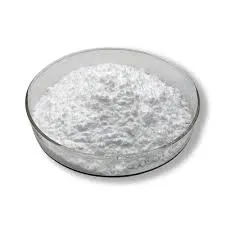
Jul . 29, 2024 03:21 Back to list
Exploring the Properties and Applications of HEC Cellulose in Modern Industries and Research
HEC Cellulose Applications and Effects
Hydroxyethyl cellulose (HEC) is a non-ionic, water-soluble polymer derived from cellulose. With the chemical formula C2H6O2·C6H10O5, HEC has garnered significant attention in various industrial sectors for its unique properties, which include its ability to form gels and emulsions, retain moisture, and improve the texture of products. This cellulose derivative serves crucial functions across multiple applications, ranging from construction materials to food production.
HEC Cellulose Applications and Effects
In the realm of personal care products, HEC is frequently utilized as a thickening agent in shampoos, conditioners, lotions, and creams. This cellulose derivative is favored not only for its ability to modify viscosity but also for its compatibility with other ingredients, making it an excellent choice for creating stable formulations. Additionally, HEC's hydrophilic nature helps retain moisture in skin and hair, offering a conditioning effect that enhances the overall aesthetic and tactile experience of cosmetic products.
hec cellulose

HEC is also making substantial impacts in the food industry. It is commonly used as a texturizer, thickener, and stabilizer in a wide array of food products. Its ability to retain water and keep emulsions stable allows food manufacturers to create creamier textures in sauces, dressings, and dairy products while extending shelf life. As consumers increasingly seek out products labeled as 'natural,' HEC’s origin from cellulose—a renewable resource—aligns perfectly with the growing demand for sustainable and safe food additives.
In addition to its practical applications, HEC possesses qualities that are beneficial in the pharmaceutical field. It is often included in drug formulations as a binder and thickener for tablets and suspensions. HEC enhances the consistency and stability of pharmaceutical products, ensuring that they can be effectively administered and absorbed. Moreover, its biocompatibility and low toxicity make it a suitable choice for use in various biomedical applications, including drug delivery systems and tissue engineering.
While HEC offers numerous benefits, it is essential to consider environmental implications. Although cellulose is a renewable resource, the production process of HEC can involve chemicals that raise concerns regarding sustainability and ecological impact. Efforts are being made to develop greener production methods that minimize harmful byproducts and solvents, further enhancing the attractiveness of HEC in eco-conscious markets.
In conclusion, hydroxyethyl cellulose (HEC) is a versatile and valuable derivative of cellulose with a broad range of applications across various industries. From construction and personal care to food and pharmaceuticals, its unique properties make it an essential component in enhancing product quality and functionality. As environmental considerations continue to shape industry practices, focusing on sustainable production methods for HEC will further solidify its position as a vital ingredient in modern formulations. The ongoing innovation and research surrounding HEC promise a future where both efficacy and sustainability can coexist.
-
Versatile Hpmc Uses in Different Industries
NewsJun.19,2025
-
Redispersible Powder's Role in Enhancing Durability of Construction Products
NewsJun.19,2025
-
Hydroxyethyl Cellulose Applications Driving Green Industrial Processes
NewsJun.19,2025
-
Exploring Different Redispersible Polymer Powder
NewsJun.19,2025
-
Choosing the Right Mortar Bonding Agent
NewsJun.19,2025
-
Applications and Significance of China Hpmc in Modern Industries
NewsJun.19,2025







